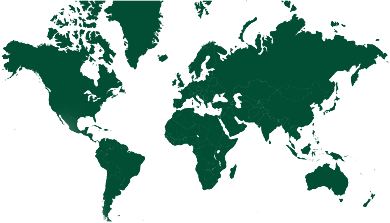Dataset
2018 • University of Applied Sciences and Arts Northwestern Switzerland (FHNW) Treatment trains for water reclamation
This dataset offers a global compilation of typical treatment trains used in water reuse and reclamation. Each treatment train is categorized by reuse purpose, including drinking water (blue), agricultural/environmental use (green), industrial use (orange), and urban use (brown). The dataset encompasses 37 unit processes, supplementing them with alternatives or omitting as necessary, to document practical configurations for resource recovery. This tool supports planning, design, and implementation of water reclamation solutions across diverse settings, providing detailed benchmarks and case studies for practitioners, policy makers, and researchers in the sanitation sector.
Recovered Materials & Products
Water reuse
Waste Streams
Wastewater
Confirmed countries
Germany


What is this tool intended for?
The dataset is designed to assist water resource management practitioners in understanding and implementing effective treatment configurations for water reuse and reclamation. It documents practical examples of treatment trains tailored to specific reuse purposes.
How does this tool work?
The dataset categorizes treatment trains by reuse purpose and details the unit processes involved, with specific configurations tailored to reuse objectives. It includes real-world applications across diverse geographies and provides examples of adaptation and scalability.
Who might use this tool and with which types of stakeholders?
The dataset is intended for a range of professionals involved in water reuse and sanitation. Municipal planners and water utility managers can use it to design and implement treatment systems that align with urban and regional water reuse goals. Environmental and civil engineers may rely on the dataset to compare treatment technologies and assess their feasibility in different settings. Researchers focusing on resource recovery technologies can utilize the dataset for benchmarking and case study analysis, while policymakers working in water reuse and sanitation can leverage its insights to inform regulatory frameworks and capacity-building initiatives.
What stages of a process can this tool support?
The dataset is applicable in multiple stages of water reclamation project development. It supports the planning and design of treatment systems by providing reference examples and best practices. It can also be used for operational benchmarking and optimization, helping utilities and engineers assess the performance of existing systems. Additionally, policymakers and industry stakeholders can use the dataset to support policy formulation and capacity-building efforts related to water reuse.
What skills, capabilities, and resources are required to use this tool?
Users of the dataset should have a technical understanding of water treatment processes and familiarity with sanitation technologies. The ability to interpret treatment train configurations and assess their applicability to specific reuse objectives is important. Access to regional data on water demand, treatment capacities, and regulatory requirements will further enhance the usefulness of the dataset in practical applications.
Where can this tool be used?
The dataset is globally applicable, with examples drawn from Europe, Asia, Africa, and the Americas. It is relevant for use in diverse settings, including urban, peri-urban, and rural environments, and can inform water reuse planning across different climatic and socio-economic conditions.
Get the Tool
The dataset is open access and can be downloaded freely from Zenodo. It operates as a standalone reference document, requiring no proprietary software.
Background and project details from the COROADO Project: https://cordis.europa.eu/project/id/283025
https://doi.org/10.5281/zenodo.1972626
Technologies
Reverse osmosis
Ultrafiltration
Constructed wetlands
Activated sludge
Lagoons
Waste stabilization ponds
Themes
Design
Operation and maintenance